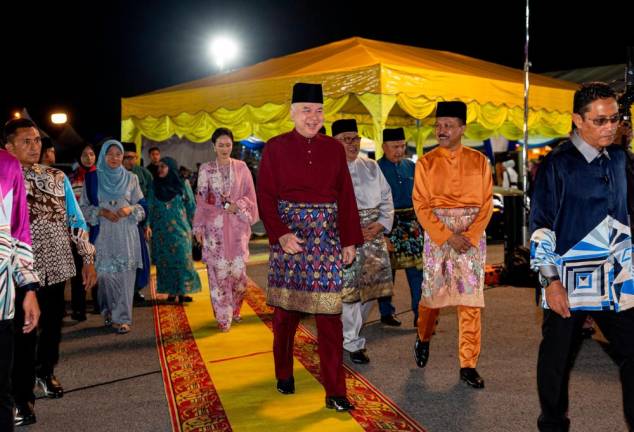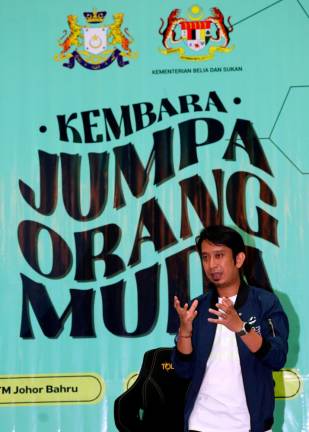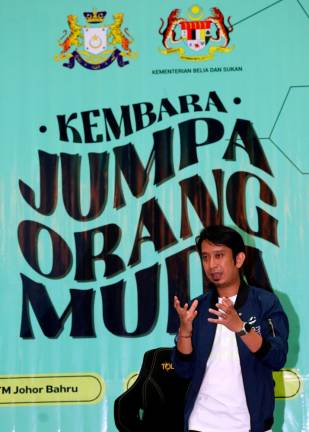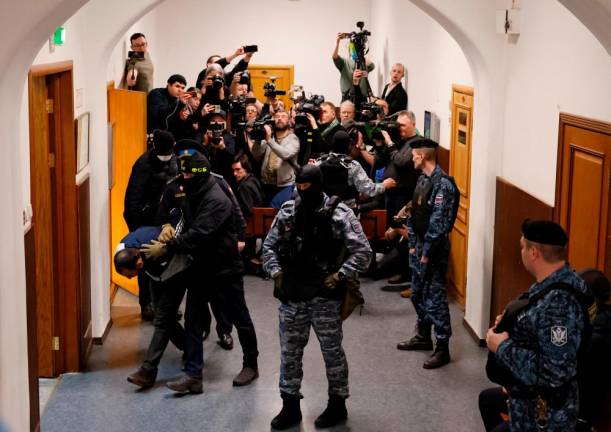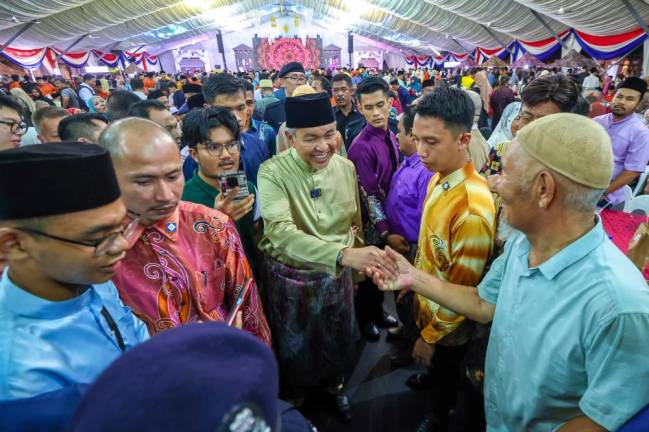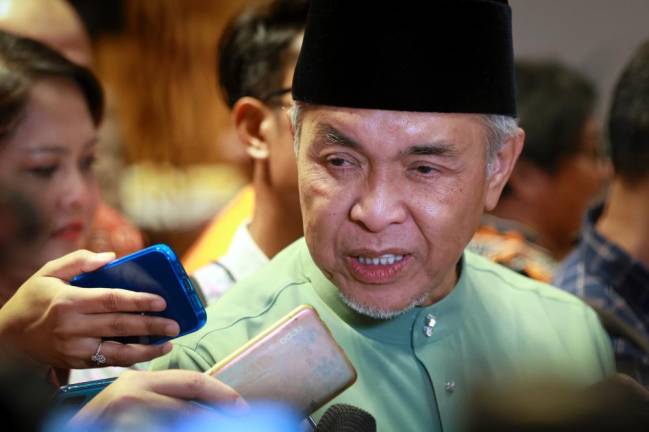THE analysis by a US newspaper trying to explain the motive behind the mass killing of several Asian and minority groups in Texas completely misses the role that US mainstream media may be playing in stirring up racial hate through their reports of domestic and geo-political developments relating to the new Cold War by the US against China.
Besides his neo-Nazi beliefs, did sinophobia lead the shooter Mauricio Garcia to target his victims based on their appearance? We may never know. But it is no coincidence that anti-Asian hate crimes in the US increased 339% in 2021 and that sinophobia underlies the anti-Asian racism of white supremacism. Incidentally, this racism does not distinguish between Indian, South Korean, Japanese, Chinese or other Asian-looking victims.
It is not only the Western media, which is prominent in anti-China reporting and promoting sinophobia, that needs to examine its role and be concerned with the consequential effects of its China coverage.
Some of Asia’s media similarly need to reflect on their culpability in making China out as the existential threat to global peace. This leads to not unexpected ripple effects in generating fear, compounded with hate and a search for recourse to some form of retaliation against the new arch-enemy.
China as the arch-enemy
India and Japan have the most prominent anti-China and sinophobic media in Asia. Slanted and prejudiced coverage of China by Indian media is not unexpected because of their long-standing border dispute. However the negative and adversarial news reporting by Japan’s media stands out today.
The Japanese anti-China news reports may not be surprising considering Japan’s wars of aggression against China since the beginning of the 20th century.
American political scientist and professor Rudolph Rummel, whose career has been devoted to detailing collective violence and war with a view toward helping their resolution or elimination, has estimated that “the Japanese military regime murdered nearly 3,000,000 to over 10,000,000 people, most probably almost 6,000,000 Chinese, Indonesians, Koreans, Filipinos and Indochinese, among others, including Western prisoners of war”.
Distinguishing it from “genocide”, he said: “This democide was due to a morally bankrupt political and military strategy, military expediency and custom and national culture.” (https://www.hawaii.edu/powerkills/SOD.CHAP3.HTM#:~:text=From%20the%20invasion%20of%20China,including%20Western%20prisoners%20of%20war)
Nikkei Asia’s anti-China coverage
Today, Japanese news agency Nikkei Asia is playing a leading role in the region in stirring up criticism, hatred and enmity towards China. This is ostensibly directed at President Xi Jinping and the Communist Party of China.
Reading between the lines, it is aimed at China and the Chinese as a whole.
The giant Nikkei Inc., to which the agency belongs, boasts that it is providing unparalleled coverage of Japan’s economy, industries and markets. With its ownership of the Financial Times in London and 37 bases globally and 1,500 journalists, Nikkei claims it is “ideally positioned to provide Asian news and analysis to a global audience”.
The Nikkei daily is published twice a day, both in paper and digital form. Some 2.7 million copies of the morning edition are published every day and 1.4 million copies of lighter newspaper come out each afternoon.
The online version has 430,000 paying subscribers and offers English versions of some articles. The group owns three other major newspapers: Nikkei Veritas (which reports on stock markets), Nikkei Marketing (on business and services) and Nikkei Sangyo Shimbun (on industries), as well as the online news source Nikkei Telecom, with 1.5 million subscribers, and a dozen other websites.
The network has 54 bureaus in Japan providing text and video reporting. It runs a TV channel (Nikkei CNBC, which largely follows stocks), publishes magazines and books, and has a huge bank of business data. It also organises conferences and provides specialist reporting on Asia, notably in Chinese. (https://malaysia.news.yahoo.com/nikkei-japanese-media-giant-140-years-history-165823280--finance.html)
So, what is the news on China that Nikkei, with its enormous reach and unrivalled journalistic resources, is providing to Japanese and global audiences?
The following headlines were downloaded from its website’s front page “China Up Close”, which gives a clear picture of the paper’s unrelenting anti-Xi and anti-China analysis and coverage.
1. “For wolf-warrior envoy in France, it’s mission accomplished”
2. “Xi, not Trump, started on path to decoupling”
3. “Why Xi Jinping did not meet Taiwan’s ex-president?”
4. “Xi’s chief of staff Cai Qi is symbol of powerful court”
5. “Heavyweight Xi Jinping gives himself a lightweight Cabinet”
6. “Economic ministers are marginalised as the CCP takes over policymaking”
7. “In his parting words, Li Keqiang warns that ‘heaven is watching’”
8. “Veiled dig comes as Xi neuters State Council to bolster party”
9. “Xi wants China’s security apparatus under his direct grip”
10. “Could the US come to regard China as a state sponsor of terrorism?”
11. “Futuristic Chinese military unit most likely behind balloon campaign”
12. “PLA’s Strategic Support Force blends space, cyber and electronic warfare”
13. “Was object spotted over Japan in 2020 a Chinese spy balloon?”
14. “Efforts to save face for Xi show same traits as abrupt cancellation of zero-Covid policy”
15. “Jack Ma downfall spells end of China’s golden age”
16. “China’s elderly pay ultimate price for Covid missteps”
17. “China’s female protesters break nation free from zero-Covid”
18. “Quash the ‘white paper’ – Xi’s Chinese dream turns into nightmare”
According to the news agency, its most-read commentary in 2022 was “Xi no longer described as ‘people’s leader’ in China”.
Recruiting foreign anti-China forces
The latest anti-China contribution from Nikkei Asia is an interview with former Marine and former US president Donald Trump’s adviser, Matthew Pottinger. Not content with reports provided by Japanese journalists, the agency, with its deep pockets, is also drawing on foreign war hawks to buttress its media propaganda drive against China.
In an article with the provocative title of “China ‘Great White Shark’ fed by the West” on May 4, Pottinger is fed several leading questions intended to confirm China, under Xi, as a threat to the US, Japan and other “free countries”.
He does this with much enthusiasm and with a call for China to be caged as it has done “a very good job of pretending and fooling foreign interlocutors, particularly policy elites and wealthy businessmen”.
No advisory is provided of Pottinger’s background as a US hardline anti-China idealogue, who has worked in developing the Trump administration’s policies against China. Instead, the article refers to Pottinger’s current position as a “distinguished senior fellow at Stanford University’s Hoover Institution” to give him and the opinion piece an aura of academic independence and legitimacy.
An admirer of Pottinger has described Pottinger’s position on China in the following way: “Regarding the varied domains in which the US and China are locked into competition, whether it be over trade or artificial intelligence, Pottinger believes that US-China cooperation must take a backseat to US military might as a form of deterrence, and to trade conflict as a form of economic leverage.
“Although Pottinger is not the brazen hawk that Bolton was and prefers to work behind the scenes, he is a core architect of the Cold War-era competition that characterises contemporary US-China relations. The nation and the world can ultimately expect a continuation of the current administration’s policies.” (https://uscnpm.org/2019/10/02/matthew-pottinger-architect-of-the-chinese-cold-war/)
If you make China the enemy, China will be your enemy
In its China coverage and in disseminating the opinions of anti-China personalities, including US war-mongering officials, Nikkei Asia appears ignorant of and oblivious to Japan’s historical crimes against China. It also appears unable to practise truthfulness, accuracy, impartiality, fairness and public accountability in its China reporting, which is unfailingly slanted and hostile.
Nikkei Asia appears bent on pushing China to regard Japan as an enemy. China has for now turned the other cheek against Japanese media propagating anti-China reports and working to undermine the development of peaceful relations between the two countries. But for how long can this policy of tolerance to an antagonistic giant media organisation influencing Japanese and global public opinion and policymaking continue?
Lim Teck Ghee’s Another Take is aimed at demystifying social orthodoxy. Comments:letters@thesundaily.com




